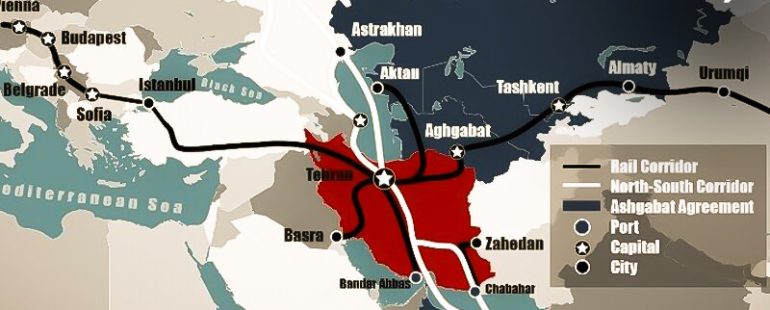
International transport to Iraq via Iran has been a significant aspect of trade and logistics for many nations in the Middle East and beyond. This connectivity has not only supported economic development but has also played a crucial role in bilateral relations between Iran and Iraq. In this article, we will explore the nuances of transportation routes, modes, legislative environment, economic implications, and challenges associated with facilitating transport to Iraq through Iran.
Historical Context
The historical ties between Iran and Iraq date back centuries, influenced by shared cultural, religious, and economic aspects. In modern times, particularly following the fall of Saddam Hussein in 2003, there has been a noticeable increase in trade and transportation exchanges. Iran has positioned itself as a vital conduit for goods entering Iraq, especially in light of political and infrastructural challenges within Iraq itself.
Transportation Routes
Land Routes
- Trans-Iranian Highway:
- The primary land transport route from Iran to Iraq is the Trans-Iranian Highway, which connects key cities in Iran to border crossings into Iraq. Major crossings include:
- Mehran: Located in the Ilam province, it is one of the most frequently used border gates for commercial cargo.
- Shalamcheh: Situated near Khorramshahr, this border is critical for goods moving into Basra.
- Agarzhan: This crossing is utilized for heavy machinery and transport vehicles.
- The primary land transport route from Iran to Iraq is the Trans-Iranian Highway, which connects key cities in Iran to border crossings into Iraq. Major crossings include:
- Road Infrastructure:
- The Iranian government has invested significantly in improving road infrastructure to facilitate faster and more efficient transport. High-quality highways enable the smooth movement of goods and materials, reducing transit times.
Rail Routes
- Railroad connectivity has been growing, with projects aimed at enhancing the rail link between Iran and Iraq. The completion of the Shalamcheh-Basra railway connection project is expected to bolster trade, enabling larger volumes of cargo to be transported economically.
Air Transport
- Air transport isn’t as widely used for cargo given the logistical efficiencies of land routes. However, major Iranian airports such as Imam Khomeini International Airport in Tehran offer international cargo transport options for urgent shipments to Iraq.
Economic Implications
Trade Volume
- Trade between Iran and Iraq has seen exponential growth. In 2022, bilateral trade reached approximately $12 billion, with forecasts suggesting that this figure could rise as infrastructure improves and trade routes expand. Iran exports a variety of products, including foodstuffs, construction materials, and consumer goods, while Iraq exports oil and other natural resources.
Employment Opportunities
- The transport sector contributes significantly to employment in both countries. Investments in transport infrastructure have generated jobs and fostered economic growth in border regions, benefitting local populations.
Legislative Environment
Bilateral Agreements
- The Iranian and Iraqi governments have pursued several bilateral agreements to streamline customs procedures, facilitate transit, and enhance cooperation in trade. The creation of joint working groups to resolve trade barriers has led to improved cargotransit times and regulations.
Customs and Regulations
- The customs process is a vital aspect of international transport. Efforts are being made to simplify customs clearance procedures to reduce delays that often hamper trade. Investments in digital customs systems are underway to modernize these processes.
Challenges in Transport
Political Factors
- The political landscape of the Middle East is often uncertain, with shifting alliances and geopolitical tensions impacting trade flows. Political instability in Iraq can disrupt transport routes and logistics.
Infrastructure Limitations
- Although improvements are being made, some areas of Iran’s transport infrastructure still require significant upgrades. Issues such as road maintenance and capacity constraints can lead to delays.
Regulatory Hurdles
- Despite efforts to streamline customs processes, bureaucratic hurdles still pose challenges for transport operators. Inefficiencies, lack of transparency, and corruption can result in increased costs and delays.
Security Concerns
- Security in both Iran and Iraq remains a concern. Transport operators must navigate areas with potential conflict or unrest, which can impact logistics and transport plans.
Environmental Considerations
With growing awareness about the environmental impacts of transportation, there is an increasing emphasis on sustainable practices in international transport. Efforts to mitigate pollution via improved fuel standards, investment in eco-friendly logistics facilities, and the promotion of rail transport over road transport are crucial in the region.
Conclusion
The dynamics of international transport to Iraq via Iran illustrate the importance of connectivity in fostering economic relationships. The interplay of geographic, economic, political, and social factors makes this corridor a vital trade route. As both nations continue to enhance their transportation links, address challenges, and invest in infrastructure, the prospects for increased trade and enhanced cooperation appear promising. The ongoing developments in this sector will undoubtedly shape the future of bilateral relations and regional commerce in the years to come.

Comments (No Responses )
No comments yet.